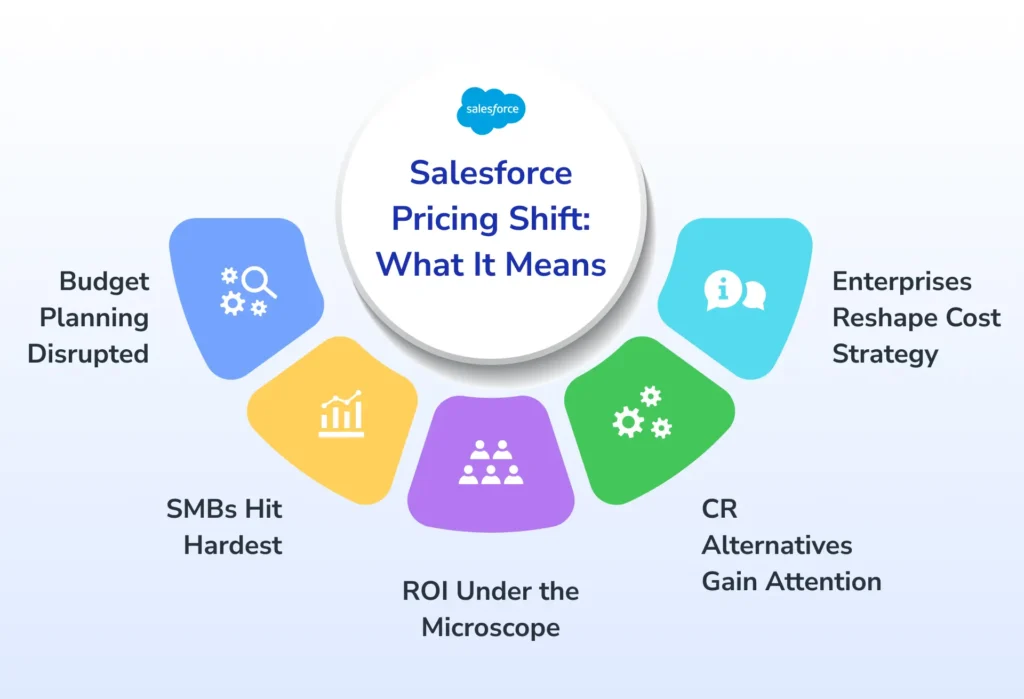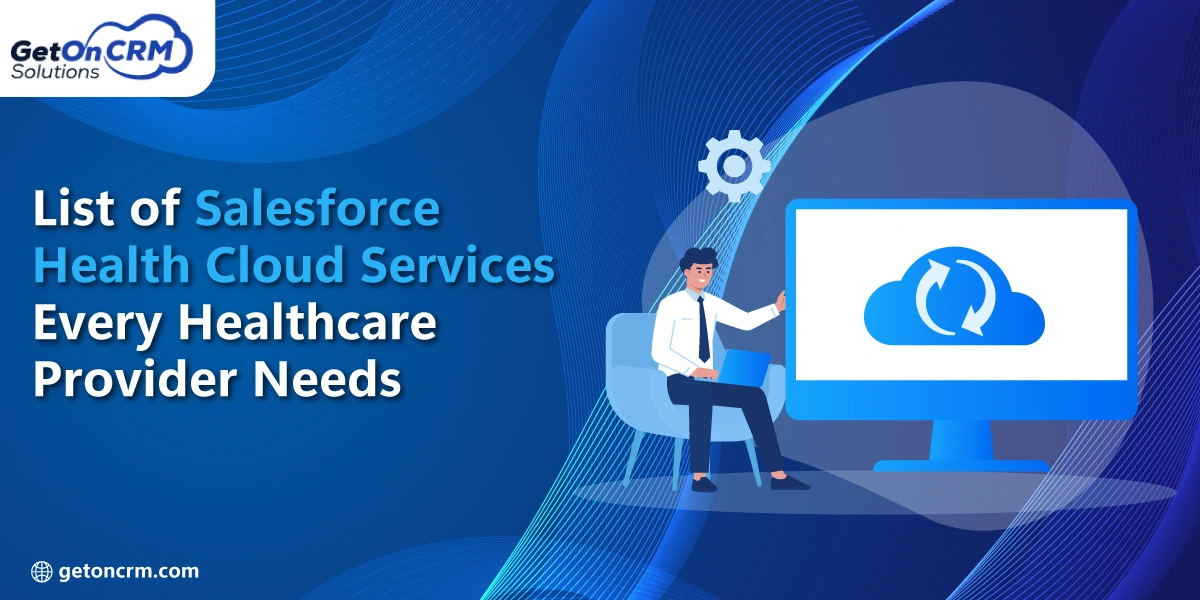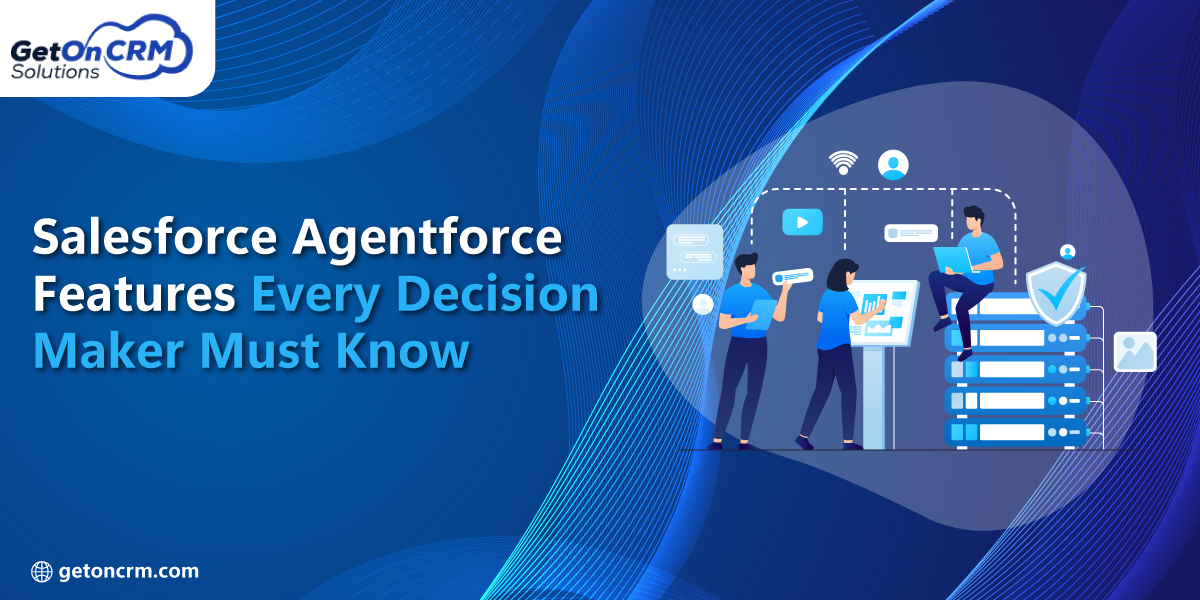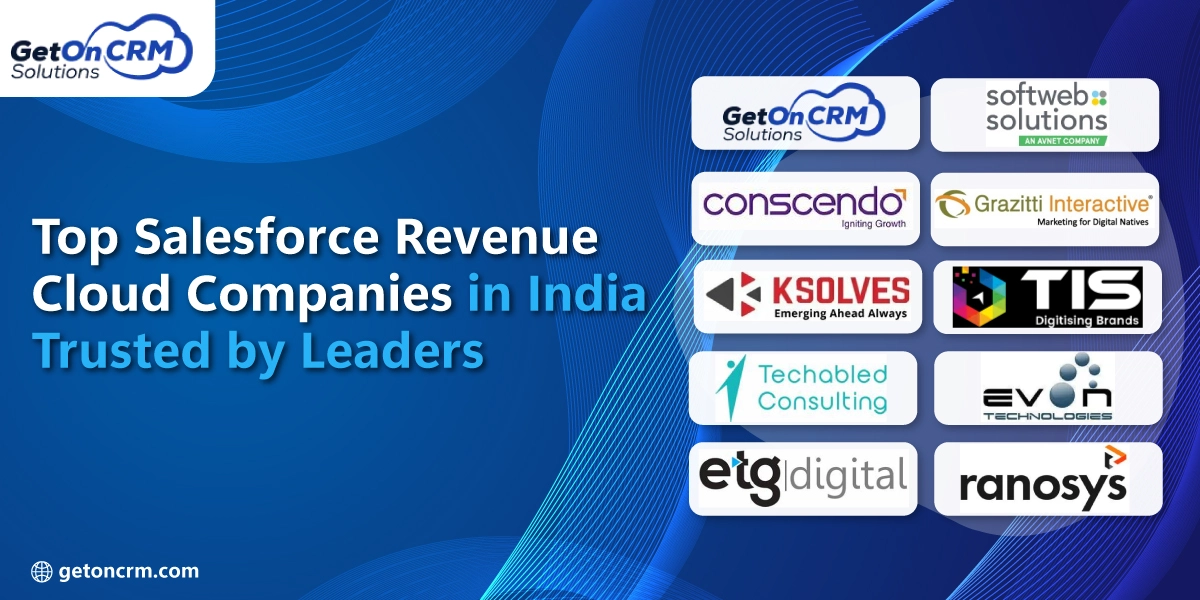Salesforce’s pricing announcement has sparked conversations across industries, especially among businesses evaluating their tech investments. With the update, the company aims to reflect the growing value of its platform, driven by innovations in AI, automation, and analytics.
The Salesforce price increase isn’t just about numbers—it’s about aligning with the expanded capabilities of Salesforce AI Cloud, Einstein Copilot, and industry-specific solutions. According to the official announcement, these changes mark a strategic shift toward delivering even more powerful tools across CRM, data, and workflow automation.
This blog breaks down the pricing shift, exploring Salesforce Price Increase 2025 – Impact and Solutions, how it affects different business segments like SMBs vs enterprises, and how to navigate the Salesforce CRM pricing comparison to protect your ROI and optimize platform usage.
Overview of the Salesforce Price Increase in 2025
When the pricing update hit, every shop that leans on the cloud giant felt the shake, and the ripple reached both old customers and newcomers signing yearly contracts. With most editions now carrying higher monthly bills, anyone on automatic renewal must read the fine print to avoid budget surprises and keep Salesforce from eating up more of their CRM spend than planned.
How Much Does Salesforce Cost?
So, how much does Salesforce cost now? For most businesses, it’s about 10% more than last year.
On average:
Small teams: $15K–$40K per year
Midsize companies: $50K–$150K
Enterprises: $200K+ with advanced features and AI layers
Whether you are growing fast or just tightening costs, that price bump is a good moment to review your plans and hunt for the best deal.
Key Details from the Salesforce Pricing Announcement 2025
In its Salesforce introduced a 6–12% price hike across core products. This update applies to new customers from February 2025 and to existing customers upon contract renewal.
| Salesforce Product | Previous Price (Annual/User) |
2025 Price (Annual/User) |
Increase (%) |
|---|---|---|---|
| Sales Cloud | $75 | $80 | ~6.6% |
| Service Cloud | $75 | $80 | ~6.6% |
| CPQ | $150 | $165 | ~10% |
| Marketing Cloud | $1,250 | $1,400 | ~8–12% est. |
What’s Driving the Salesforce Price Increase?
AI Innovation Comes at a Cost—But Delivers More
The Salesforce pricing update isn’t just a number shift—it’s a reflection of serious upgrades. From Einstein GPT and AI Agents to an expanded Data Cloud, Salesforce is doubling down on automation, analytics, and smarter workflows.
These innovations mean faster insights, improved support, and better ROI. While the Salesforce price increase may impact budgets, the return—especially for those who harness its AI power—is clear.
For SMBs asking how Salesforce pricing affects small businesses in 2025, or wondering how much Salesforce costs in 2025, the answer lies in value. With the right strategy, the price hike fuels growth, not just cost.
Use a Salesforce CRM pricing comparison to weigh the benefits, and watch your productivity scale with purpose.
Impact on Businesses – What You Should Know
The pricing refresh is more than revised cents-on-the-dollar; it’s a ripple that touches every part of planning, spending, and scaling. Whether you run a tiny startup or an up-and-coming venture, grasping the updated news lets you keep one step ahead of competitors.

Here are five key business impacts to watch:
1. Budget Planning Gets a Shake-Up
The new rates push every group-especially those on yearly plans-to rethink the entire CRM line item. Money that once slid quietly to the tool now demands fresh attention and tighter tracking.
2. Small Businesses Feel the Pinch
The debate over how the bump hits SMBs shows no sign of cooling. For many smaller firms, even a slight rise rearranges priorities, nudging them to reconsider the platform or lean toward budget-friendly rivals..
3. ROI Scrutiny Gets Tighter
With updated pricing, leadership will be laser-focused on Salesforce ROI after pricing changes. Every feature must now justify its cost and efficiency.
4. CRM Comparisons on the Rise
Teams are searching online for updated Salesforce pricing side-by-side with rivals, measuring gigs, storage, and tools to spot hidden value-or bigger bills from competitors.
5. Enterprises Rethink Cost Strategies
For large organizations, the enterprise Salesforce cost strategy 2025 is being rewritten. This could involve consolidating licenses, renegotiating contracts, or shifting to customized billing models.
Salesforce CRM Pricing Comparison 2025
CPQ and Quote-Based Pricing for Different Clouds
The update introduces new rates and features across all major clouds. Users will notice a shift toward quote-based and usage-driven models—especially for cross-cloud solutions and enterprise packages.
6% Price Increase on August 1
Salesforce announced that list prices for Enterprise and Unlimited editions across Sales, Service, Field Service, and Industry Clouds will rise by an average of 6%, effective August 1. Starter, Pro, and Foundations editions remain unaffected.
While there’s a noticeable change, many businesses can still unlock value by using CPQ tools for tailored quotes and smarter plan selections. These tools help growing teams and complex setups design pricing structures that align with actual needs.
For SMBs, understanding the cost impact is key. Despite rising costs, companies optimizing their setup often see improved ROI, especially through automation and AI-driven features.
Wondering how much Salesforce costs for your team? Our Salesforce CPQ Services provide the clarity and customization you need.
Whether you’re scaling or managing multiple clouds, it’s time to rethink your enterprise cost strategy for better results and budget alignment.
How to Optimize Salesforce ROI Amid Price Hikes
Salesforce customers are feeling the sting of the announced price hikes, and that has budget teams crunching numbers all over the industry. Rather than panic and trim features, companies that think clearly can actually turn the increase into a chance to strengthen their return on investment.
1. Audit Current Usage and Remove Redundancies
Start by identifying underused features or duplicate licenses. This cuts unnecessary spending and helps you realign costs with actual usage—crucial when evaluating the enterprise Salesforce cost strategy.
2. Bundle Clouds and Use Platform Add-Ons Wisely
Explore bundled options instead of standalone tools. It’s a strategic move for those comparing Salesforce CRM pricing comparison, especially when aiming to minimize the Salesforce annual billing impact.
3. Automate Workflows and Reduce Manual Dependencies
Replacing slow, manual tasks with smart automations speeds work and frees employees for higher-value jobs. As reliance on clicks shrinks, productivity climbs, helping your organization absorb the new rates without losing momentum.
4. Implement Salesforce CPQ for Smarter Selling
Turning tough quotes into buttons you click makes deals go through faster and puts more money in your pocket. That’s exactly what the Salesforce CPQ tool does, even on the longest, twistiest sales path.
5. Partner with Experts for Tailored Cost Strategy
Not all businesses are affected equally. Expert-led planning ensures smarter decisions at scale.
Practical Advice – What Your Business Should Do Next
The Salesforce pricing update has left many businesses rethinking their CRM strategies. Here’s how to stay ahead of the price increase and align costs with value.
1. Reassess Your Salesforce Usage and License Needs
Audit current users, features, and licenses
Identify underused or redundant modules
Decide if downgrading or consolidating is feasible based on the Salesforce pricing update 2025
2. Plan for Annual Billing and Budget Adjustments
Understand the Salesforce annual billing impact
Align internal finance planning with the Salesforce pricing announcement 2025
Avoid renewal surprises by setting alerts in advance
3. Conduct a Salesforce ROI Evaluation Post-Pricing Change
Calculate value gained vs cost increase
Include productivity boosts, automation gains, and customer success metrics
Assess Salesforce ROI after pricing changes to justify the spend
4. Explore Salesforce CPQ for Smarter Pricing Strategy
Use CPQ to configure quotes and explore flexible plans
Evaluate bundles that suit business needs better
Salesforce CPQ Services
Consider CPQ’s role in an enterprise Salesforce cost strategy 2025
5. Consult a Salesforce Partner for Custom Optimization
Bring in experts to tailor solutions, avoid overpaying
Review contracts, license structures, and migration plans
Ideal for those analyzing how Salesforce pricing affects small businesses 2025
6. Partner with Experts for Tailored Cost Strategy
Collaborate on strategic adjustments to get the most value
Conduct a Salesforce CRM pricing comparison for 2025
Clarify how much does Salesforce cost now for your business case
How GetOnCRM Helps You Navigate the Pricing Shift
Salesforce Expertise that Saves You Time and Cost
The 2025 pricing shake-up raised more than a few eyebrows, , and it did more than just swap old numbers for new ones-it invited every user to rethink how they use, pay for, and plan around their CRM. Luckily, GetOnCRM showed up long before the headlines and has walked customers through every licensing storm over the years.
Think of us as that friend who always seems to know the quickest route. Whether were breaking down the 2025 hike, spotting unused seats, or resetting features so you pay only for what makes money, we roll up our sleeves, audit your current setup, scale every page, and tune your products for speed and profit.
When our CPQ pros step in, they don’t just plug in Salesforce-they tweak settings, update quotes, and tie every feature to your growth timeline. From apples-to-apples pricing side-by-sides to forecasting the impact of annual billing, we build the clear picture most companies miss.
So, if you catch yourself asking How much will Salesforce really cost me next year or Will this jump sink my small team, rest easy: we’ve already helped businesses like yours write leaner, smarter, ROI-first plans. With GetOnCRM, your pricing strategy stays ahead, dependable, and ready to grow.
Final Take: Turn the Price Hike into an Opportunity
Salesforce’s 2025 price shake-up is a big deal that every user should notice. No matter if you run a corner store or a global firm, knowing the new dollar signs and what year-long payments mean is vital to getting good value. The fresh pricing alert also nudges you to compare your plan with other options, so your return on investment stays healthy. Taking a proactive, informed approach helps align your strategy with budget and growth goals. For tailored advice, consider speaking with a Salesforce Partner.
Your Top Questions About the Salesforce Price Increase 2025—Answered
1. What is the Salesforce pricing update 2025 all about?
The 2025 pricing update includes changes to Salesforce product costs, billing models, and package structures. It affects new and existing customers, with implications for ROI and long-term planning.
2. How much does Salesforce cost in 2025 for small businesses?
Pricing depends on the edition and features chosen. Small businesses should assess how the Salesforce price increase 2025 aligns with their usage and explore cost-effective plans.
3. How can I compare Salesforce CRM pricing in 2025?
A Salesforce CRM pricing comparison 2025 includes reviewing feature sets, billing cycles, and support levels across different editions—like Essentials, Professional, and Enterprise.
4. How does the Salesforce annual billing impact my budget?
Annual billing can lower the per-user cost but requires upfront planning. The update may influence payment flexibility, especially for growing teams.
5. Is the Salesforce ROI still strong after the pricing changes?
Yes—when configured correctly. Despite the Salesforce price increase 2025, businesses can still achieve strong Salesforce ROI after pricing changes by aligning tools with business goals.



















